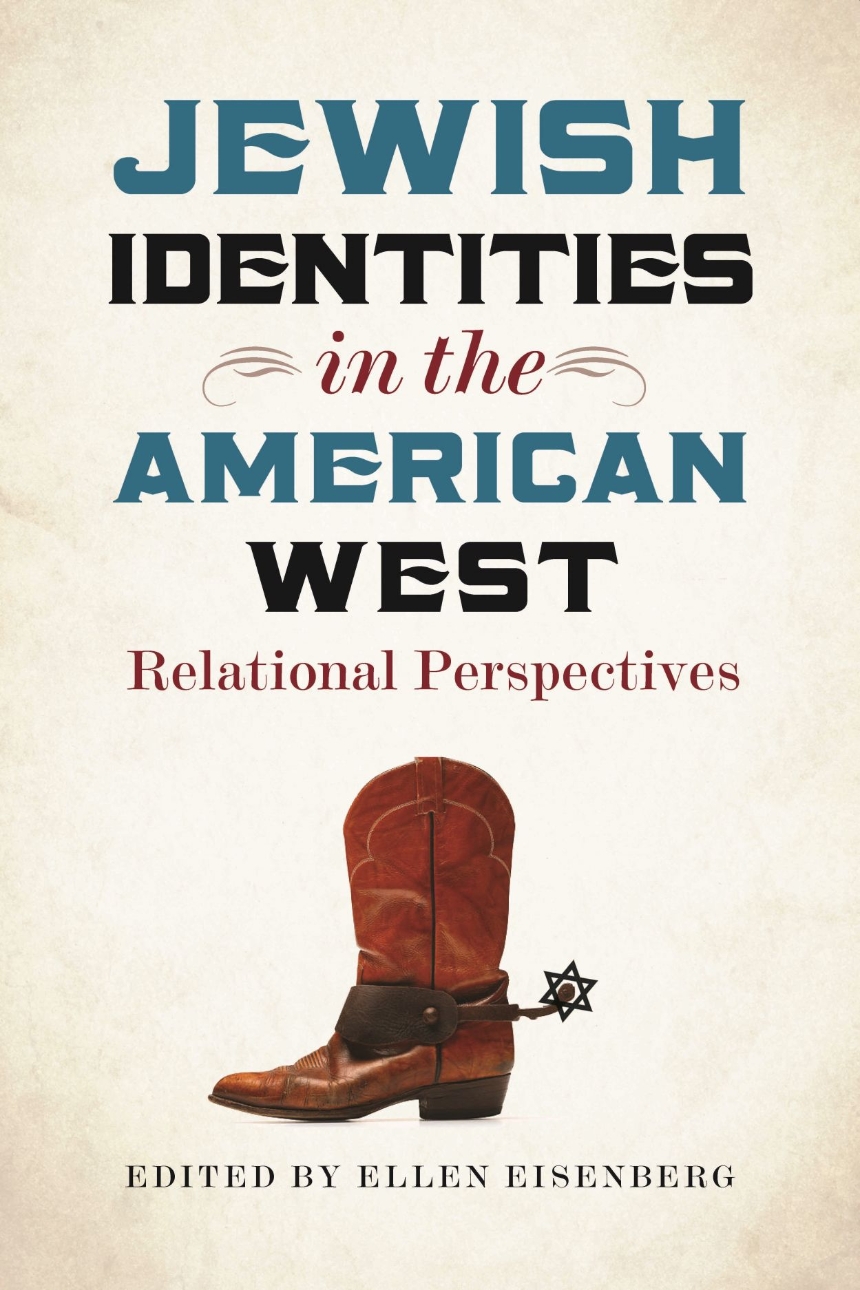9781684581283
9781684581306
9781684581290
Distributed for Brandeis University Press
Jewish Identities in the American West
Relational Perspectives
Jewish Identities in the American West fills a significant gap in racial identity scholarship.
Since the onset of New Western History in the 1980s, the complexity of race and ethnicity as it developed in the American West has increasingly been recognized by scholars and the wider public alike. Ethnic studies scholars have developed new perspectives on racial formation in the West that complicate older notions that often relied on binary descriptions, such as Black/white racialization. In the past few decades, these studies have relied on relational approaches that focus on how race is constructed, by both examining interactions with the white dominant group, and by exploring the multiple connections with other racial/ethnic groups in society. Historians are discovering new stories of racial construction, and revising older accounts, to integrate these new perspectives into the formation of racial and ethnic identities. This collection of essays on Jews in the American West advances this field in multiple ways. With essays that cover the period from the mid-nineteenth century to the present, these authors present a collective portrait of change over time that allows us to view the shifting nature of Jewish identity in the West, as well as the evolving frameworks for racial construction. Thorough and thought-provoking, Jewish Identities in the American West takes readers on a journey of racial and ethnic identity in the American West.
Since the onset of New Western History in the 1980s, the complexity of race and ethnicity as it developed in the American West has increasingly been recognized by scholars and the wider public alike. Ethnic studies scholars have developed new perspectives on racial formation in the West that complicate older notions that often relied on binary descriptions, such as Black/white racialization. In the past few decades, these studies have relied on relational approaches that focus on how race is constructed, by both examining interactions with the white dominant group, and by exploring the multiple connections with other racial/ethnic groups in society. Historians are discovering new stories of racial construction, and revising older accounts, to integrate these new perspectives into the formation of racial and ethnic identities. This collection of essays on Jews in the American West advances this field in multiple ways. With essays that cover the period from the mid-nineteenth century to the present, these authors present a collective portrait of change over time that allows us to view the shifting nature of Jewish identity in the West, as well as the evolving frameworks for racial construction. Thorough and thought-provoking, Jewish Identities in the American West takes readers on a journey of racial and ethnic identity in the American West.
400 pages | 18 halftones, 8 tables | 6 x 9 | © 2022
Brandeis Series in American Jewish History, Culture, and Life
History: American History
Sociology: Social History
Reviews
Table of Contents
List of Illustrations
List of Tables
Preface
By George J. Sánchez
Acknowledgments
Introduction
By Ellen Eisenberg
Chapter One: White Jews of Victoria, 1858-1914
By Lynne Marks and Jordan Stanger-Ross
Chapter Two: “Negotiating Jewish Identities in Oregon: From White Pioneer to Ethnic Minority”
By Ellen Eisenberg
Chapter Three: Jewish Border Merchants between Economies of Extraction and Policing, 1848 –1910
By Maxwell E. Greenberg
Chapter Four: Locating Jewish Youth in the L.A. Young Communist League, 1925-1940
By Caroline Luce
Chapter Five: Unexpected Allies: David C. Marcus and his Impact on the Advancement of Civil Rights in the Mexican American Legal Landscape of Southern California
By Genevieve Carpio
Chapter Six: “Intermediate Types”: Ottoman Jews and the Ambivalence of Belonging in Seattle
By Devin Naar
Chapter Seven: For the “Wrong” Reasons: Los Angeles Jews and Busing
By Sara Smith
Chapter Eight: “Sephardic Jewish persons are classified as white”: Education, Race, and Sephardic Jews in the 1970s
By Max Modiano Daniel
Chapter Nine: Complicating Jewish Whiteness: Jews of Color in the American West
By Bruce Phillips
Contributor Biographies
List of Tables
Preface
By George J. Sánchez
Acknowledgments
Introduction
By Ellen Eisenberg
Chapter One: White Jews of Victoria, 1858-1914
By Lynne Marks and Jordan Stanger-Ross
Chapter Two: “Negotiating Jewish Identities in Oregon: From White Pioneer to Ethnic Minority”
By Ellen Eisenberg
Chapter Three: Jewish Border Merchants between Economies of Extraction and Policing, 1848 –1910
By Maxwell E. Greenberg
Chapter Four: Locating Jewish Youth in the L.A. Young Communist League, 1925-1940
By Caroline Luce
Chapter Five: Unexpected Allies: David C. Marcus and his Impact on the Advancement of Civil Rights in the Mexican American Legal Landscape of Southern California
By Genevieve Carpio
Chapter Six: “Intermediate Types”: Ottoman Jews and the Ambivalence of Belonging in Seattle
By Devin Naar
Chapter Seven: For the “Wrong” Reasons: Los Angeles Jews and Busing
By Sara Smith
Chapter Eight: “Sephardic Jewish persons are classified as white”: Education, Race, and Sephardic Jews in the 1970s
By Max Modiano Daniel
Chapter Nine: Complicating Jewish Whiteness: Jews of Color in the American West
By Bruce Phillips
Contributor Biographies

